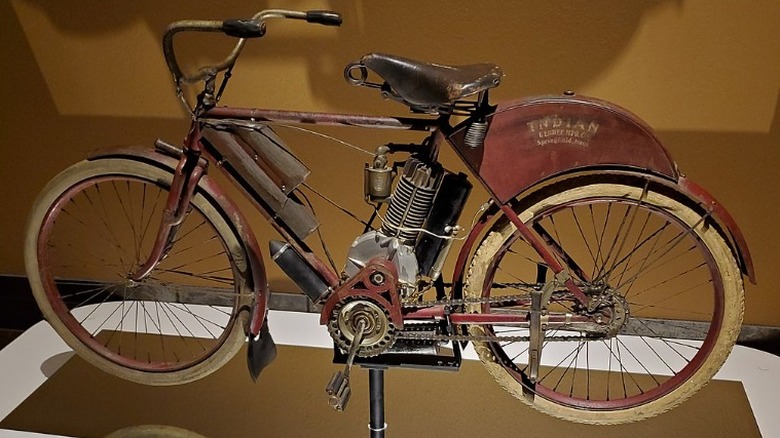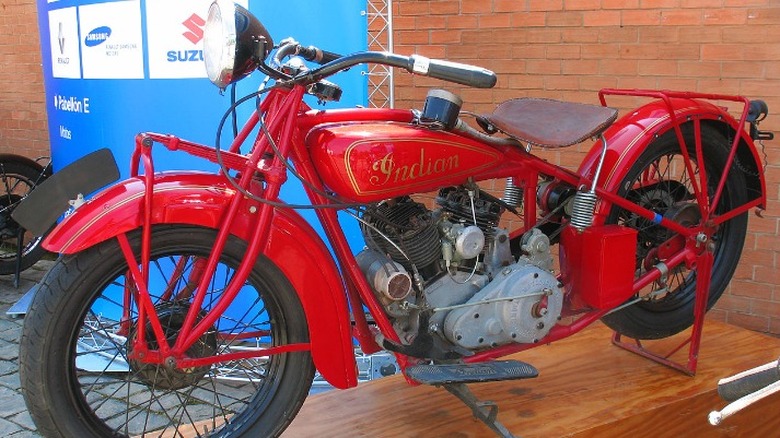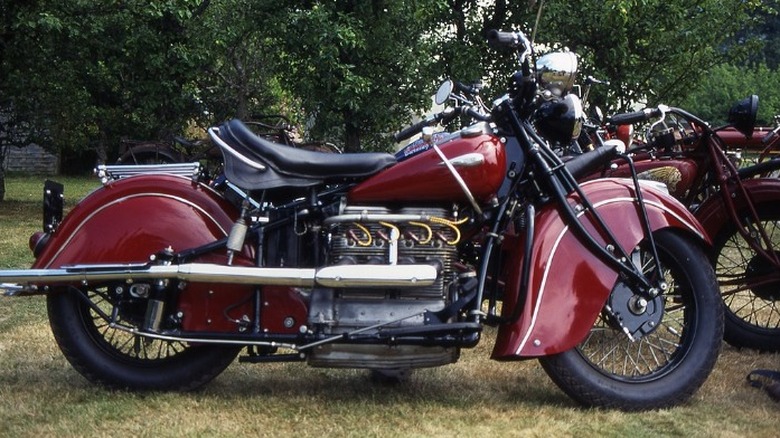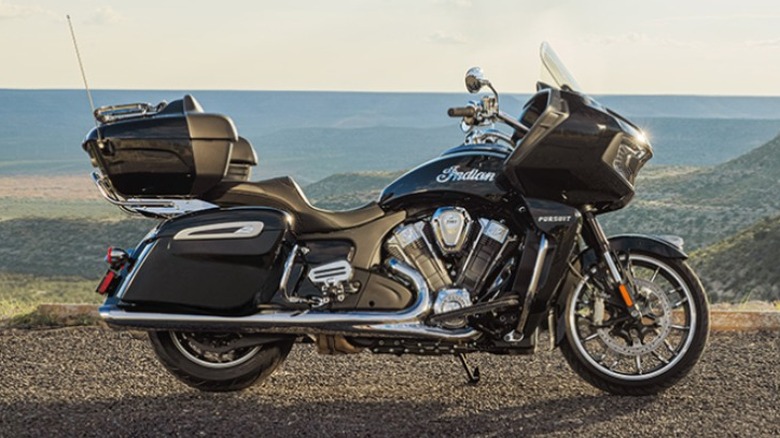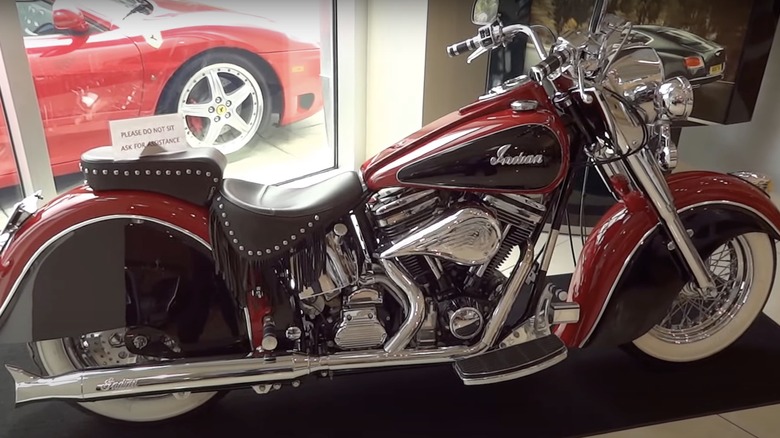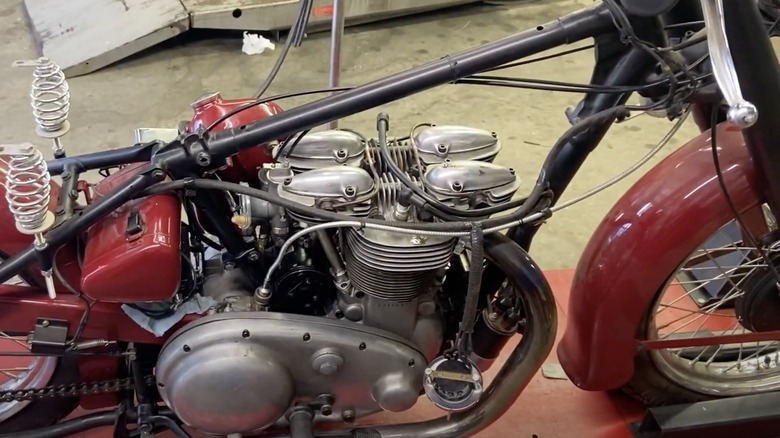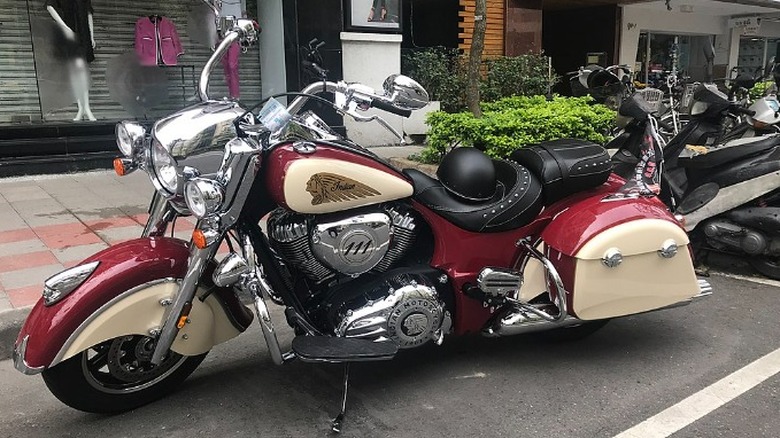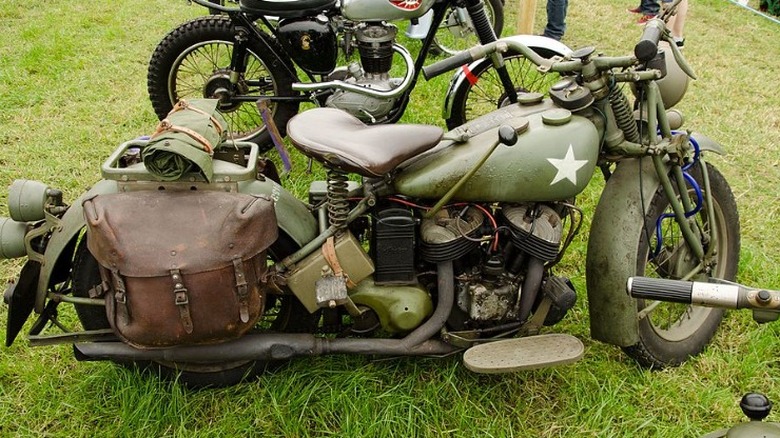

The 10 Best Indian Motorcycles Ever Made
source link: https://www.slashgear.com/1187704/the-10-best-indian-motorcycles-ever-made/
Go to the source link to view the article. You can view the picture content, updated content and better typesetting reading experience. If the link is broken, please click the button below to view the snapshot at that time.
The 10 Best Indian Motorcycles Ever Made
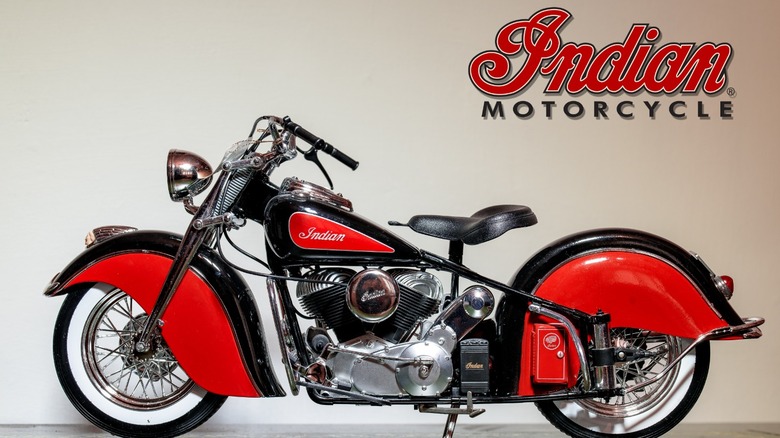
Indian motorcycles represent the free spirit of cruising highways today, including in the United States. Although they are some of the best cycles on the market, the Indian name has a checkered past and its success was never a foregone conclusion. Before WWII, Indian motorcycles were among the best-selling bikes and a lot of early innovations came from the company. It was after the second war that things began to fall apart and the company went through a series of owners and bankruptcies. Nonetheless, the styling of some of its early bikes continues to define the American cruiser today and some of those models are among the most valuable of all motorcycles.
Indian products are part of the reason that v-twin cruisers are dominant in American motorcycle manufacturing. However, in the interim period between the original company's downfall in 1953 and resurgence in 2011, different owners of the brand slapped the Indian name on a variety of imported machines that have left us with some interesting historical models, mostly from Italy and the U.K. But it is partially through these efforts to rejuvenate the brand that it has remained an icon that conveyed a certain cache — and its current owners were able to cash in to offer a full range of excellent bikes. Despite the rocky road to this point, the Indian name has been affixed to dozens of fabulous machines and these are 10 of the best.
1901 Indian F-Head Single
Any motorcycle built in the early 1900s isn't the fastest, most comfortable, or most sophisticated, but it could be considered all of those things for its time. More importantly, it came first and set off what would become the Indian story. In 1897 George M. Hendee founded the Hendee Manufacturing company to produce bicycles, of which one model was named American Indian. He later joined Oscar Hedstrom to develop engines for their bicycle frames, creating Indian motorcycles, which were named such that they would be easily identified as an American product.
In 1901, four prototype Indians were built for demonstration to investors to help develop the company into a full-fledged manufacturer. Using an existing bicycle frame, Hendee and Hedstrom developed an engine based on an existing model but with some of their own improvements. The power output was rated at 1.75 horsepower and was said to be smooth and reliable. Some innovations employed involved cutting the downtube out of the bicycle frame and installing the engine as a stressed member and using a chain drive instead of a leather belt common for other early motorcycles (via Bonhams). One example from 1901 sold as recently as 2011 for $133,500, about $30,000 lower than an auction just 5 years prior. Regardless, it is certain in today's market that the price would be significantly higher if it came up for auction again.
[Featured image by JJonahJackalope via Wikimedia Commons | Cropped and scaled | CC BY-SA 4.0]
1930 Indian Scout 101
The Indian Scout line was introduced as a smaller companion to the Chief line in the '20s. Many of Indian's models featured a 74-cubic-inch v-twin while the Scout could be had with either a 37-cubic-inch v-twin, but was increased to 45 by 1927. Much of this was done to compete in different divisions of AMA racing, in which participation was meant to help sell motorcycles.
The Scout 101 was introduced in 1928 with a longer wheelbase and lower seat height from the previous models, and it came with a hand-shifter and foot-operated clutch connected to a 3-speed transmission. The Scout was designed by one of Indian's best-known designers of the time, Charles B. Franklin. It was one of the most popular models of the era and praised for its even 50/50 weight distribution and excellent handling all the way to its top speed of around 80 mph, which made it a lightning-fast machine for 1930's technology (via Nation MC Museum). The Scout 101 is an attractive machine that marks the start of what would become the iconic Indian style and has become one of the most sought-after models by collectors, with recent auction prices exceeding $40,000.
[Featured image by order_242 via Wikimedia Commons | Cropped and scaled | CC BY 2.0]
1953 Indian Chief
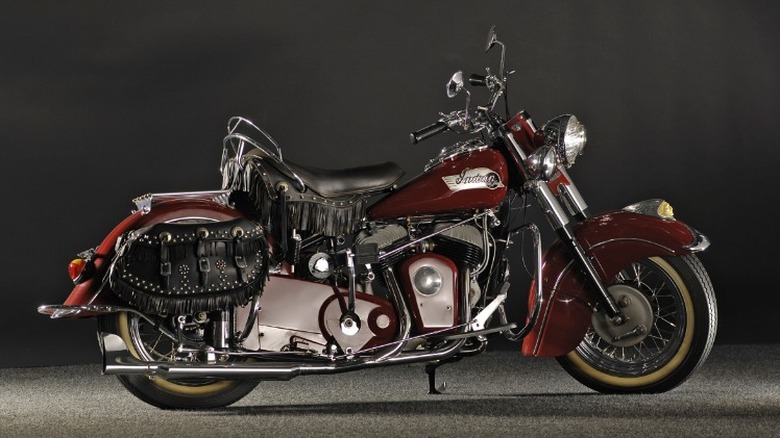
After WWII, Indian got back into producing consumer motorcycles. While the company picked back up using the same side-valve v-twin engine from before the war, the new Chiefs offered a more advanced suspension than its competitors. Forks for the chief beginning in 1950 were hydraulic tubes while the rear wheel was suspended by a "Double Action" spring frame. The rear suspension utilized a spring above to smooth out the road while another one below softened travel downward, all at a time while its main competitor, Harley-Davidson, used rigid frames only sprung up front. Otherwise, these bikes were mostly standard for the day with a left foot-operated clutch and a hand-operated shifter to the left of the tank (via Fast Bikes India).
The most significant feature of this Indian Chief is its styling. These bikes had the most dramatic skirted fenders up to that time, giving the bikes the classic look of a big v-twin cruiser with long, flowing lines from head to tail. These Indians continued to be popular bikes, but problems with the company grew as the '50s approached. All Indian production ended in 1953 and only about 600 Chief models were built before the end, making them among the most valued models by collectors, according to the National Motorcycle Museum.
2023 Indian FTR
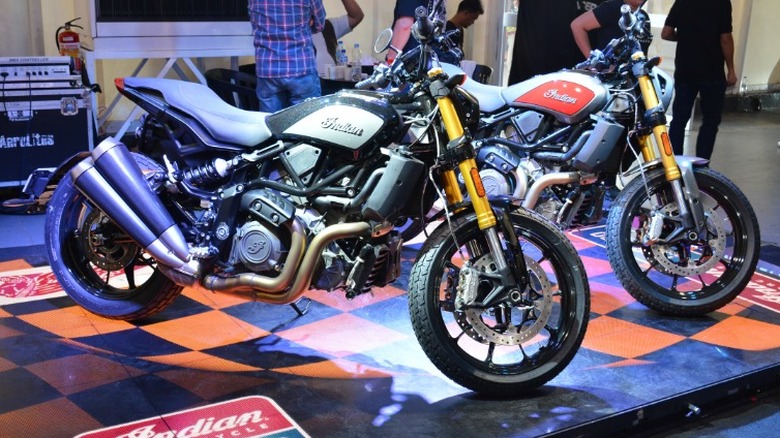
While Indian motorcycles is known for creating classic American v-twin cruisers, the modern company is stretching its legs, working to bring more buyers into the fold. The best example is its latest FTR model. Styled after flat track racers of the past, the FTR uses the Indian v-twin engine wrapped in a stylish and decidedly sporty frame. Shedding the embellished style of the bigger bikes and opting for a light and nimble package more akin to a modern sport bike, the FTR makes a statement that Indian will not be put in a box.
Indian made an entrance into flat track racing in 2016 with a competition-only FTR750. Taking inspiration and some technical details from this motorcycle, including the trellis frame, Indian debuted the FTR1200 in 2019 for consumer purchase. Indian has since shortened the name to FTR but retained the liquid-cooled 1,200cc v-twin engine powering the bike. The racer qualities have been toned down to make the FTR a manageable street bike suited for hitting some mountain switchbacks and backroad cruises. The v-twin delivers a potent 111 horsepower and the suspension is set up to offer a firm but forgiving ride, making it feel planted through the corners and comfortable on the straights, per Cycle World. The FTR proves that an American company can build a sport bike that can compete with the Japanese models and even keep up with a Ducati.
1941 Indian Model 441
Indian Motorcycles acquired the Ace Motor Corporation following the death of its founder, according to Silodrome. As a result, Indian picked up the right for the designs of Ace's inline 4-cylinder engine and incorporated it into its lineup, originally as the Indian Ace. Indian initially built its models with few changes but started making improvements to the design within a couple of years. Eventually, the Ace would become the Indian 402, the first 4-cylinder bike from the company.
Indian 4-cylinder production continued throughout the '30s until it ended with the Indian 441 Four, which would also be the last 4-cylinder motorcycle manufactured in the U.S. By the time the 442 came around, it had incorporated the Indian styling with deep skirted fenders and an appropriate amount of chrome. The engine was the largest on offer for a motorcycle of the day at 77 cubic inches, and, while it may not have been faster than the v-twins, it was much smoother, per Hemmings. The long longitudinally-mounted engine gives this bike a distinctive look incomparable to anything else on the road, and these bikes are said to be the most luxurious machines available in their time. The 4-cylinder engine also gives these bikes a sound so unlike other contemporary bikes that an approaching Indian could easily be mistaken for something like an old MG.
[Featured image by Qflieger via Wikimedia Commons | Cropped and scaled | CC BY-SA 3.0]
2023 Indian Pursuit
Over the years, Indian has offered some of the biggest and most luxurious cruiser motorcycle cruisers on the market and the current company is fulfilling that legacy well. The biggest, best-equipped, and most expensive model currently offered by Indian is the Pursuit. Sitting at the top of the range, the Pursuit is a fully dressed touring motorcycle with every option and accessory imaginable. It is big and heavy, but its 1,800cc liquid-cooled v-twin engine has plenty of power to get where you want to go comfortably.
Stylistically, the Pursuit is stuck a bit in the past, especially when compared to something like the Goldwing or a BMW. Technologically, they are thoroughly modern. Although the big Indian uses the same big v-twin engine layout as its main competitor, its engine is brought up to date by being liquid-cooled with overhead cams. This makes it good for more than 100 horsepower and a generous 128 lb-ft of torque at the crank, according to Rider Magazine. Elsewhere it includes a large touchscreen with digital controls and navigation as well as heated seats and grips, an audio system, cruise control, and adjustable ride height. It is a worthy successor to the Big Chiefs of the early 20th century, but at around $30,000, all this heritage comes at a premium.
1999 Indian Chief
Indian went through a long period through in which the only thing sold with its name was built elsewhere. From the '50s through the '70s, holders of rights to the Indian name set up import arrangements mostly with Italian manufacturers to distribute single-cylinder bikes of small displacement to sell as beginner and novelty machines (via Motorcyle.com). None were particularly successful and no Indians were being sold by the 1980s. But in 1999 the first big v-twin Indian motorcycles since 1953 went on sale with the 1999 Indian Chief.
After a bit of legal wrangling over getting the rights to use the Indian name, the company was reborn as an American manufacturer. It produced 1,100 motorcycles in its first full year of production, according to The New York Times. With the new Chief, the long-skirted fenders were back as well as a large v-twin engine. Although the bikes were being manufactured at a new facility in the U.S., the engines came from S&S, a company known for its production of v-twin engines used as replacements for Harley-Davidson motorcycles. These Indians were basic cruisers that offered a generous amount of power, 75 horsepower, and classic styling, per Auto Evolution. The rest of the bikes were mostly standard offerings, but, for the first time in decades, an alternative American cruiser. Even though the company would not last, these models are desirable to collectors, especially the 1999 models as they had the most limited production run.
1949 Indian 249 Super Scout
After the war, the first and only model to be offered by Indian was the Chief. This changed in 1949 when a new smaller model was added to the lineup in an effort to attract different buyers. During the war, Harley-Davidson and Indian contributed thousands of bikes to the war effort, but British manufacturers produced 400,000, per Ride Apart. The abundance of war surplus cycles led to GIs taking up riding and British bikes became as big a part of the scene as the American v-twins. Indian's owner decided to diversify by offering a range of similar bikes with vertical twins and singles, of which the Indian Scout Super Sport 249 was one.
Despite what you might assume from its name, the 249 came with a parallel-twin engine of 440cc displacement. It would compete with the BSA, Norton, and Triumph motorcycles entering the market. The engines were built by the Torque Manufacturing Company that Indian had acquired, but dealers accustomed to the big v-twin bikes were hesitant to embrace these new models. The 249 Scouts were decent bikes that were attractively styled. They featured the same rear suspension as the bigger Chiefs and the styling blended the best of the British and American machines. According to Old Bike Mag, shortly after production began and bikes were going out to dealers, Britain devalued the pound against the dollar, sending imported bike prices down by a third. Indian could not compete and all bike production ended in 1953.
2010 Indian Chief Vintage
The 1999 revival of Indian was short-lived as production ended amid another bankruptcy in 2003. Indian manufacturing kicked off once more under the stewardship of the British investment firm Stellican in 2006. These bikes were made in King's Mountain, North Carolina, and are often referred to as King's Mountain Indians. Stellican invested heavily into production and released thoroughly re-engineered bikes with all-new engines, now with fuel injection.
The 2010 Chief is a classy machine dripping with chrome and vintage Indian style. It carries the requisite skirted fenders with broad saddles and fat headlights. Other enhancements include disc brakes front and rear, which was one of the high points in the review by Motorcycle.com. These bikes were built to be upscale luxury machines, hand-built by craftsmen to order and powered by a 105-cubic-inch engine paired to a 6-speed transmission. This model's forte is in styling.
The attention to detail in its construction is said to be evident upon close inspection and it looks beautiful from any angle. Furthermore, it performs well and its single flaw is an excess of vibration, likely resulting from a lack of counterbalance and soft engine mounts. However, the vibration is a feature and not a bug on a big v-twin cruiser for some. At around $35,000 in 2010 dollars, the Indian was very expensive, but it debuted during the largest financial crisis since the depression and the company tanked just a few years after it restarted, again.
1942 Indian 741
During WWII, Indian's total production output was put toward the war effort. Both Harley-Davidson and Indian were contracted by the War Department to design and build motorcycles to military specifications, resulting in Indian sending around 44,000 units overseas, according to Ultimate Motorcycling.
The Indian machine that won the contract was dubbed the 741. It featured Indian's 45-cubic-inch v-twin detuned with lower compression for easier starting, better reliability, and to give it the ability to run on fuels of lower quality. Other modifications include changes to the forks and seat stays to give it higher ground clearance, attachments for luggage racks and jerry cans, and simple mudguards in place of the elaborate skirted fenders, mounted high to prevent build-up of mud.
The factory making these bikes was in poor condition overall, but the dedicated workers persevered to fulfill orders and get the machines to the front as everyone played a part and did their best to give their troops overseas what they needed. When the war ended, surplus Indians helped to spawn a motorcycle culture at home and abroad as decommissioned bikes could be picked up cheaply and put to civilian use. The 741 may not have been the best Indian ever built, but it contributed to the defeat of fascism and that gives it a place among the heroes who fought on the side of freedom and against tyranny.
[Featured image by SG2012 via Wikimedia Commons | Cropped and scaled | CC BY 2.0]
Recommend
About Joyk
Aggregate valuable and interesting links.
Joyk means Joy of geeK
